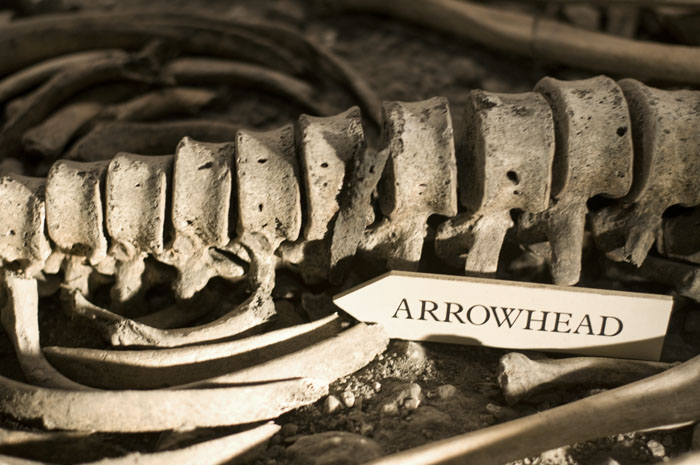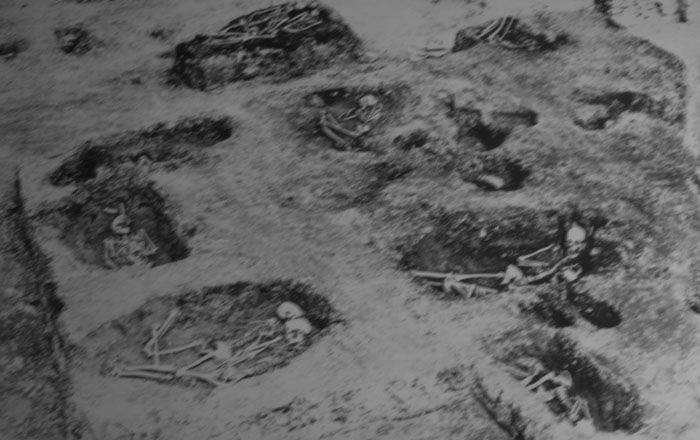

Maiden Caste (see images of the Iron age Hill Fort) was put under siege by the invading Roman armies in Ad 43. The army was commanded by Vespasian, who later became emperor, and included the II Augusta Legion. The Roman writer Suetonius refers to fighting thirty battles with the local tribes and the capture of twenty Hill Forts. The Roman's were able to divide-and-conquer - which was very successful - even if the local tribes put up a brave fight their efforts were inevitably centric to defending their own small territory and failed to merge into a more regional force which might have been able to repel or deter the Romans.
Cemeteries, of Britons, have been found at Maiden Castle and Spetisbury Rings with clear evidence of battle wounds. One of the Maiden Castle bodies, which was buried with a second body, is of a person killed by a ballista bolt which struck the person and entered their spine. The bolt is still embedded in the spine and demonstrates that some of the Roman military advances were very effective and a standard part of the roman baggage train.
After the Roman's conquest the Hill forts at Maiden Castle continued to be used and in the 4th century a small temple was built which would have been tended by a priest funded by a wealthy family (see the following reconstruction of the temple the remains of the walls are still accessible today).


